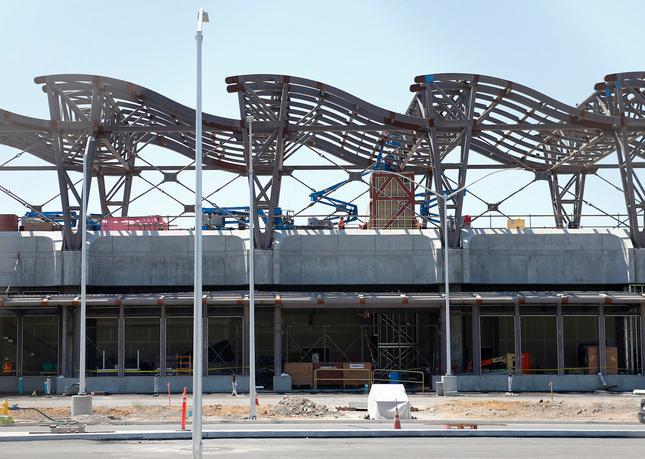
By Micah Weinberg and Derecka Mehrens
Published on 9/29/2016
This piece originally appeared in The Mercury News
Santa Clara County voters have a once in a generation opportunity in November to support essential investments in transportation improvement when they decide how to vote on Measure B. This half-cent, 30-year sales tax measure will repair streets and complete the BART extension to San Jose and Santa Clara among other important investments.
If passed by two-thirds of voters, the measure will generate $6.3 billion to fund transportation projects. But in addition to this investment, there are other immense economic benefits derived from improving roads and transit in the county.
A recent study by the Bay Area Council Economic Institute found that Measure B will be a gigantic economic boon to the county, creating nearly 4,000 jobs and more than $15.4 billion in increased business output.
The good jobs Measure B will support cut across a range of industries, skills and incomes, including construction jobs, manufacturing and professional services. Local workers and businesses will be among the chief beneficiaries.
The $6.3 billion in total transportation spending over 30 years will stimulate the local economy through local contracting and support on-going operations and maintenance jobs.
Further, this funding will allow Santa Clara County to leverage additional funds for greater investment from state and federal sources and create an even greater impact. The direct spending will have ripple effects as dollars change hands and translate into new jobs and new business revenues.
To calculate the economic impacts, the Bay Area Council Economic Institute employed computer modeling widely used by federal, state, and local transportation agencies. The model considers a range of information and projections, including future population growth and travel patterns, labor and goods movement, market access and construction spending, to estimate the costs, benefits, and economic impacts that flow from them.
In addition to the many direct and indirect effects of Measure B investments, there are other economic impacts that are just as important but more difficult to quantify.
For example, San Jose has the fastest growing traffic congestion of any metropolitan area in the U.S. From 2010 to 2014, the annual number of hours of traffic delay per commuter grew from 37 to 51 hours, a 36.8 percent increase. It’s one of only two major metropolitan areas to exceed a 30 percent increase.
That growing delay creates a huge drag on worker productivity, discourages new economic investment, adds to harmful air pollution and generally diminishes our quality of life.
The immediate benefits of more efficient transportation are most easily noticed in reduced congestion, expanded transportation options and travel time savings.
The long-term benefits of infrastructure investments like this can shape the region’s economy and prepare it for continued economic growth and resiliency against future downturns, including improving access to jobs for the county’s residents, providing economic development opportunities near new transportation hubs, extending the regional labor pool available to employers and enhancing worker productivity.
Santa Clara County was the first in the state to use a sales tax to pay for local transportation infrastructure when Measure A was passed in 1976. The county has continued to use sales taxes to fund transportation – to the tune of raising $8 billion over the last 40 years. In that time, Santa Clara County has built the fastest growing economy in the United States.
In Silicon Valley, where taking risks is a way of life, investing in transportation infrastructure is almost a sure thing.
Micah Weinberg is president of the Bay Area Council Economic Institute. Derecka Mehrens is executive director of Working Partnerships USA. They wrote this for The Mercury News.